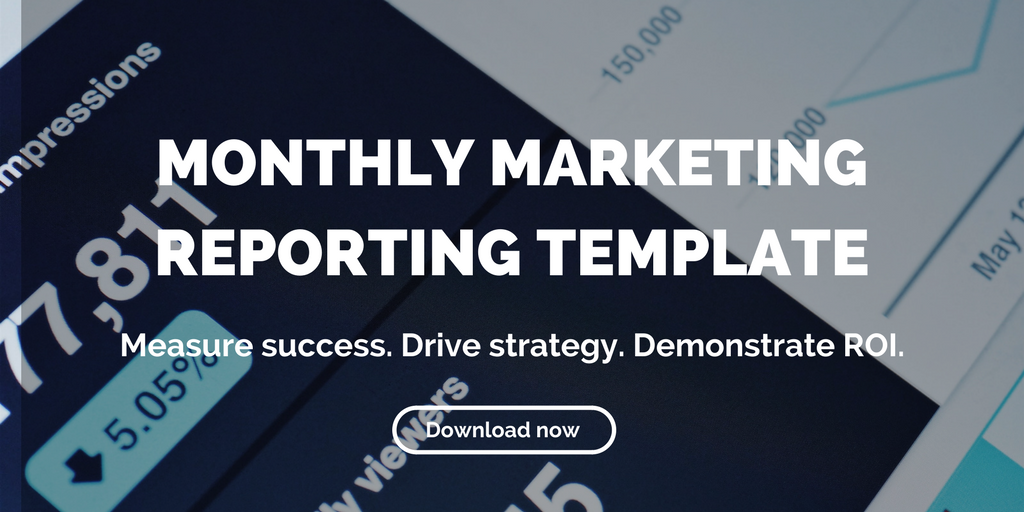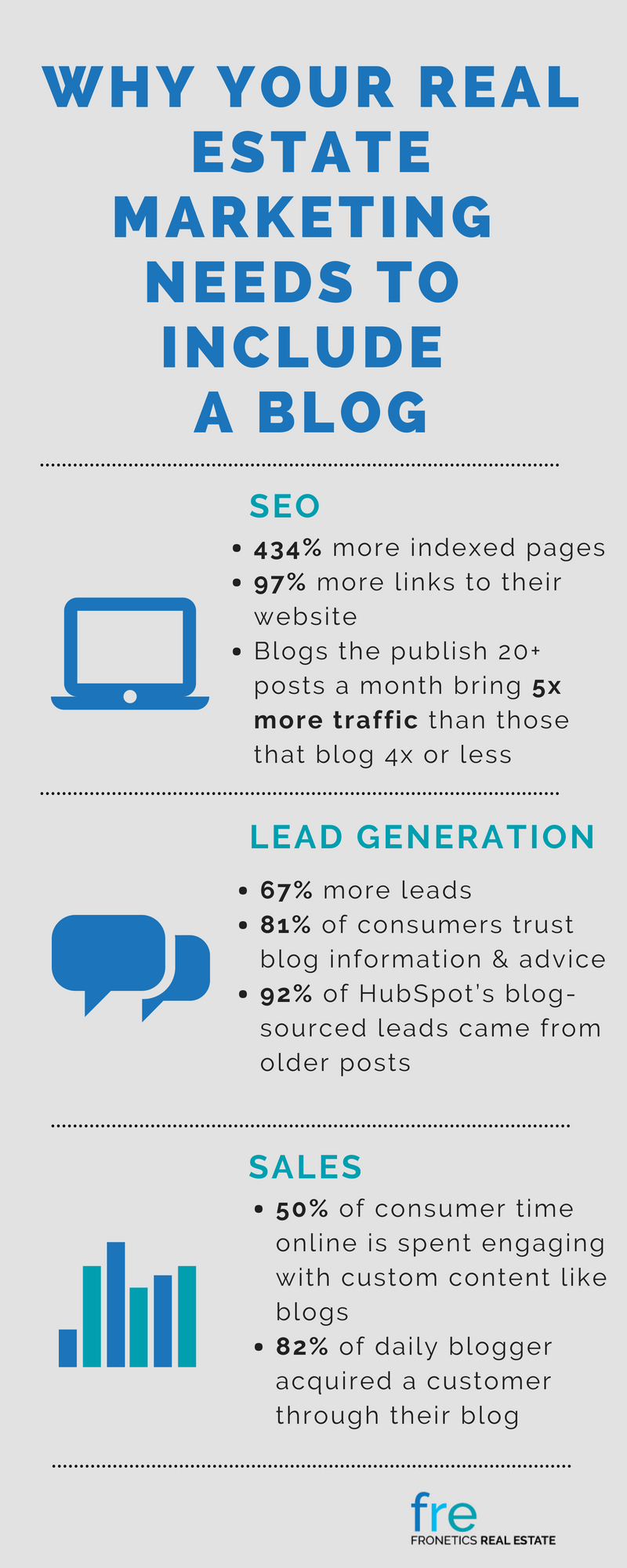Your search results for "Reliable CPC-CDE-RECERT Braindumps Sheet 🍳 Best CPC-CDE-RECERT Practice 🔚 Test CPC-CDE-RECERT Sample Questions 💉 Easily obtain free download of ▶ CPC-CDE-RECERT ◀ by searching on ☀ www.pdfvce.com ️☀️ ✊Exam CPC-CDE-RECERT Study Solutions"

Content Marketing vs. Sales Staff: Who Does What?
When your content marketing and sales forces align their efforts, they form a powerful symbiotic relationship that grows your brand and your bottom line.
There’s a big misperception out there that content marketing represents some kind of threat to the job security of sales personnel.
It’s absolutely true that content marketing is an inbound approach, contrary to the traditional outbound approach of a real estate sales force. But make no mistake: Content marketing is not a substitute or replacement for an expert sales staff.
In fact, it’s when marketing and sales work in tandem that they’re most effective. They can help each other out to generate more leads, nurture current leads more effectively, and even help close more deals.
Content marketing helps generate a steady flow of quality leads, and it provides targeted information to usher prospects down the sales funnel. But even quality leads don’t turn into sales on their own. This is where a sales staff comes in — to take those leads and cultivate them into new business.
Content marketing vs. sales: Division of labor
For content marketing and sales to work seamlessly together, it’s important to have a clear idea of the role of each. They provide different touch points for leads at each stage of the buying cycle. Here’s a quick primer:
1. Forming a relationship
In this early stage of the cycle, your content marketing efforts go toward opening up a dialogue with potential buyers and renters. Often, potential leads’ first engagement with your property comes when they come across one of your blog posts while searching the web or see one of your social media posts because they’re connected to one of your followers.
This is when your sales staff picks up the ball, keeping that positive contact going by developing it into a conversation. It’s your sales team’s job to cultivate an ongoing personal relationship with leads that come in because they encountered your content.
2. Providing information
Now that you’ve established a relationship and your sales team is continuing a dialogue with your prospect, content marketing can step in. Potential buyers spend more time than ever researching properties, considering content such as blog posts, neighborhood guides, and social media posts before making a purchase decision. The content that you share with prospects at this stage of the buyer’s journey should be designed to answer informed questions and tip the scales in your favor.
At this stage, your sales staff should be directly answering questions from prospects. When a lead reaches out with a query, it’s likely that he or she has done a fair amount of research. So your sales reps need to speak specifically to the customer’s needs in a way that content alone can’t do to keep them interested and moving down the funnel.
3. Advocating for your brand
Content marketing increases brand awareness for your properties. It helps elevate your brand position within the real estate industry and keeps your property in their sightlines, even at a time when potential buyers aren’t ready to make a purchase.
When a prospect is preparing to make a purchase or to rent property, your sales staff is the primary advocate for your brand and properties. They should be proactive in pursuing business when leads show interest in your content or when they reach out with questions. They drive dialogue and get to know potential buyers and how your property can suit their needs.
A match made in heaven
When content marketing and sales work together, you’ll see the results hit your bottom line. Curating and creating great content will generate quality leads for your company and can empower your sales force to build relationships with potential buyers and renters — and to close the deal.
Related posts:
- Infographic: Real Estate Marketing Trends 2018
- 10 Social Media Statistics for Real Estate Marketers 2018
- How to Measure Brand Awareness: A Guide for Real Estate Marketers
Your search results for "Reliable CPC-CDE-RECERT Braindumps Sheet 🍳 Best CPC-CDE-RECERT Practice 🔚 Test CPC-CDE-RECERT Sample Questions 💉 Easily obtain free download of ▶ CPC-CDE-RECERT ◀ by searching on ☀ www.pdfvce.com ️☀️ ✊Exam CPC-CDE-RECERT Study Solutions"

Paid Digital Advertising: A Beginner’s Guide for Real Estate Marketers
Paid digital advertising can help accelerate your content marketing efforts so that your content gets in front of prospective buyers and renters faster than would happen organically.
We are strong believers in content marketing. Build it, and they will come — or, in content-marketing speak, publish quality content, and buyers will come to you. But, content marketing takes time to bear fruit. There’s not much you can do about that.
Except paid digital advertising.
By investing in paid digital advertising, you can boost the reach of your posts, display ads, and videos. Pair quality content with a comprehensive digital advertising strategy, and you will be in a position to drive more traffic, create more brand visibility, and sell or lease more properties.
Your peers understand this. Within the first quarter of 2017, Facebook, Instagram, Twitter, LinkedIn, Snapchat, and Pinterest saw a 61.5% increase in paid media spend. And that’s only going to increase through 2018.
So where do you start? Here are three places to get started in using paid digital advertising to help market your property.
3 paid digital advertising platforms
1) Display ads
Display ads are the paid advertisements that appear in front of users on website pages in the form of graphics. Unlike text-based ads, display advertising relies on elements such as images, audio, and video to communicate an advertising message. Display ads are commonly referred to as banner ads, but they don’t always take banner form. They can come in all shapes and sizes, and can appear anywhere on a webpage.
Benefits: Because digital ads are visual, they can be customized with your logo, message, images of properties, or an offer to help increase brand awareness. You have the ability to use graphics, video, and audio to really stand out and highlight your properties. Display ads also allow users the ability to target a specific audience. You control which sites they appear on, which geographic area they appear in, and which demographic or niche market they appear to — all valuable tools for the real estate marketer.
2) Sponsored social media posts
There are sponsored posts plus other ad opportunities like Facebook like campaigns, website click ads, and lead ads.
Social media is a natural place to begin if you’re looking to get into paid digital advertising, particularly for the real estate industry. A good starting point is Facebook. The social media giant’s social ad revenue was more than $9.16 billion in Q2 2017 alone. And it doesn’t stop there. Twitter brought in $548 million in social media advertising revenue in the same period, and Snapchat is expected to reach over $895.5 million in ad revenue in 2017.
More specifically, three of the most useful types of sponsored social media posts for real estate marketing are:
- Facebook Like Campaigns: These campaigns are aimed directly at increasing the number of likes for a Facebook page, targeting people who might be interested in your brand and the posts you share on Facebook.
- Facebook Website Click Ads: These are ads that point people on Facebook to your website, or even the listings for specific properties.
- Facebook Lead Ads: These ads allow users to request information, estimates, or newsletters without leaving Facebook. Requiring fewer steps of prospective leads increases conversion rates.
Benefits: Running paid social ads allows you to reach a large audience at a low cost. You pay based on the type of ad you’re running. For example, if you’re looking to drive brand awareness, you’ll incur a CPM (Cost Per 1,000 Impressions). And not only are the ads relatively inexpensive to run, they’re not expensive to create. You get all of this plus the ability to target your specific audience, reaching people that are interested in learning about the properties you have to offer.
3) Google AdWords
Google AdWords places your website as one of the top results on a search engine results page (SERP) when a user searches for certain keywords of your choice. When a user clicks the AdWords link or calls your business using that link, you incur a charge (pay-per-click). Otherwise, impressions are free.
Google’s most recent update involves changes to the so-called “3-pack,” or the listing of three related local businesses on a search results page. Many users rely on the 3-pack to discover businesses in their area that offer the products and services they are seeking. This is particularly helpful for users searching for local real estate. And real estate copanies get the benefit of many additional leads and investors when they appear in the 3-pack.
Benefits: The biggest benefit of Google AdWords is its speed. You appear in a top spot in a user’s search results, meaning you are one of the first things a user sees when searching for a specific location or property keyword. That’s another good point: Google AdWords allows you to focus on people who are searching for what you have to offer, so you don’t pay for a bunch of wasted impressions — particularly valuable in real estate marketing, where geography is key. AdWords also gives you real-time reports to track your ad’s success. A dashboard shows information related to each campaign, such as the ads clicked, keywords entered by website visitors, cost of clicks and much more.
Related posts:
- How Pay-Per-Click Helped This Property Get 54 Leads
-
Learn How Content Marketing Increased Real Estate Sales by 37% in 90 Days
-
Using Content Marketing to Market and Sell Luxury Real Estate
Your search results for "Reliable CPC-CDE-RECERT Braindumps Sheet 🍳 Best CPC-CDE-RECERT Practice 🔚 Test CPC-CDE-RECERT Sample Questions 💉 Easily obtain free download of ▶ CPC-CDE-RECERT ◀ by searching on ☀ www.pdfvce.com ️☀️ ✊Exam CPC-CDE-RECERT Study Solutions"

Start Your Property’s Social Media Program in 6 Steps
When launching a property’s social media marketing program, make sure you’ve thought through strategy, content, and audience.
Social media marketing for real estate is a must-do. The reality is that’s where the average American is spending his/her free time — nearly 2 hours a day, according to a recent study. Using platforms like Facebook, Twitter, and YouTube to market your property, you can:
- engage potential buyers
- build brand awareness
- elevate brand position within the market
- decrease cost per lead
- increase occupancy or sales
- improve retention
- and more
Sounds great, right? But where do you start? Which platforms should you use? How will you ever convince your boss that this is a valuable use of your time?
Starting your property’s social media program can seem like an intimidating task, especially if company leadership is skeptical of the benefits. Here are six steps to launching a real estate social media program that will grow your business to its full potential.
6 steps to start your property’s social media program
1) Speak in the right terms.
Convincing management that you want your team to spend more time on social media to gain “followers” or get “shares” could be a hard sell — even though that kind of engagement is key in real estate sales and rentals. To win support, focus your argument around the factors that are most important to them. Lead generation, lead nurturing, conversions, sales, ROI, profits: this should be the vocabulary with which you approach this conversation.
2) Create a strategy — and put someone in charge.
Only 11% of companies without a documented content marketing strategy find their efforts to be successful, compared to 60% of companies with a strategy in place. And that number rises to 86% when the company designates someone to lead the strategy.
Develop a content marketing strategy — inclusive of social media — that aligns with your goals for the property (e.g., more visits to the website, increased occupancy, better retention rates). And whether someone on your team heads up execution or you outsource that responsibility, the leader should continually monitor analytics and tweak the strategy accordingly to ensure the property’s social media program is meeting the designated marks.
Which brings me to…
3) Determine which analytics to track.
In real estate social media, shares, likes, and impressions speak to your brand exposure, so they’re important to track. But it’s important that you’re looking at more than just these surface metrics. (Read more about so-called “vanity metrics” here.) Leads generated, conversion rates, sales, and ROI are going to tell you if your efforts are helping your bottom line. If you have a good, flexible strategy in place, these metrics will help you adjust your efforts to ensure you’re achieving your business objectives.
4) Develop quality content.
Twenty-seven million pieces of content are shared every day — and a large portion of it is crap. A social media presence could be pretty pointless unless you’re not using it in a way that your followers find valuable. Good, quality content is the alpha and the omega, the key to engaging your followers.
One of the biggest mistakes real estate marketers make is using social channels to push a blatant sales pitch. You’ll quickly lose your audience that way. Your property’s social media should be about engaging target buyers or tenants, building brand awareness, and offering valuable and interesting information.
5) Decide which channels are right for your business.
Who are you trying to reach, and what are you trying to tell them? These are good questions to ask when trying to determine which platforms will comprise your social media program. You need to know who your target buyer/tenant is, and you need to know what kind of information you’re going to offer them.
There’s a wealth of data out there about who uses which channels and when. Most social media platforms also have their own built-in analytics tools that can help you determine the best time for engagement with your followers.
Another thing to consider: You’ll want to choose channels that you’ll be able to maintain regularly and which play to your strengths. If you don’t have the time, skill, or interest in taking regular photographs of things around your property, for example, Instagram probably isn’t for you. Remember, you’ll likely want to work through several different channels to reach a maximum number of potential customers.
6) Follow your competitors.
Following your competitors is a great way to stay up to date on what they’re doing, especially if you don’t have a ton of time or money for competitive research. And when I say “follow,” I don’t mean “copy or imitate.” I mean subscribe to their blogs, engage with them on social media, and like and share their content that you find meaningful for your audience. This way, you become part of the local conversation happening online, and you know exactly what your potential buyers and tenants are seeing from (and how they’re reacting to) your competitors.
Related posts:
- The Metrics You Should Be Measuring in Real Estate Marketing
- 6 Marketing Tasks Real Estate Marketers Can Outsource
- Social Media Can Be a Strategic Weapon in Real Estate Marketing
Your search results for "Reliable CPC-CDE-RECERT Braindumps Sheet 🍳 Best CPC-CDE-RECERT Practice 🔚 Test CPC-CDE-RECERT Sample Questions 💉 Easily obtain free download of ▶ CPC-CDE-RECERT ◀ by searching on ☀ www.pdfvce.com ️☀️ ✊Exam CPC-CDE-RECERT Study Solutions"

Infographic: Statistics that Prove Why Your Real Estate Marketing Needs to Include a Blog
If you’re a real estate marketer who’s not blogging, you’re missing out.
Everyone knows you need a property website to succeed in this industry. But when it comes to making that website competitive, many abandon the brightest idea that would help them in doing so — namely, blogging.
Real estate blogging does its bit for lead generation, SEO, and sales. So if you think your property can thrive without it, you might want to think again.
Search engine visibility
As search engine algorithms get increasingly complex and sophisticated, the quality of your website’s content becomes more and more important. It’s your content that informs search engines about your site (not just keywords anymore), improving your rank in relevant search queries. And the stats bear it out — according to HubSpot, companies that blog receive 434% more indexed pages on average and 97% more links to their website.
Another fact to consider: according to a recent study by Search Metrics, the average word count of the highest ranking content in Google is between 1,140-1,285 words. In other words, long-form content, like blog posts, is one of the best things you can do to improve your website’s SEO.
But don’t be fooled into thinking that quantity outranks quality. Simply pumping out a high word count isn’t enough. Your content needs to be well-written, thoroughly researched, and engaging.
Lead generation
Blog content is ideal to share (and link to) in email or social media marketing campaigns. It can help undecided leads learn about your properties and sway them in a positive direction. Sharing your blog posts on your social media accounts helps give validity and authority to your company, as you disseminate content you created yourself.
A recent study from the Content Marketing Institute found that 67% more leads are generated by companies with an active blog. Not only that, 81% of U.S. online consumers trust information and advice from blogs. So your blog is your best bet in terms of becoming a trusted resource for your audience — leading directly to more effective lead generation and nurturing.
Sales and relationships
61% of buyers report feeling better about a company that delivers custom content and are therefore more likely to buy from that company. And furthermore, HubSpot reports that 50% of consumer time online is spent engaging with custom content — like blogs. And perhaps most powerfully, 82% of marketers who blog daily acquired a customer using their blog, as opposed to 57% of marketers who blog monthly. Blogging helps you sell real estate, and it helps you build lasting and fruitful relationships with your audience.
Check out our infographic for statistics on why your real estate marketing strategy should include blogging.
Infographic: Why your real estate marketing should include a blog
Related posts:
- 4 Ways a Blog Can Help You Sell Real Estate
- Drive More Traffic and Generate More Leads with Your Real Estate Blog with our Editorial Calendar Template
- Fronetics Real Estate Blog Named Top 60 Real Estate Marketing Blog
Your search results for "Reliable CPC-CDE-RECERT Braindumps Sheet 🍳 Best CPC-CDE-RECERT Practice 🔚 Test CPC-CDE-RECERT Sample Questions 💉 Easily obtain free download of ▶ CPC-CDE-RECERT ◀ by searching on ☀ www.pdfvce.com ️☀️ ✊Exam CPC-CDE-RECERT Study Solutions"

Top 10 Real Estate Marketing Posts 2017
Here are Fronetics Real Estate’s most-viewed real estate marketing posts from the last year.
2017 was an exciting year for Fronetics Real Estate. We officially launched our brand, and website, in September. But despite our relatively recent kickoff, FRE is an entity born out of a longstanding expertise in real estate marketing. We have been working with residential and commercial real estate clients for many years under our parent brand, Fronetics.
It is that expertise that we aim to provide for the readers of the Fronetics Real Estate blog. This year, the following have been our most-viewed posts.
Top 10 real estate marketing posts
1) Using Content Marketing to Market and Sell Luxury Real Estate
In real estate sales, you want people to find your properties, like what they see, and ultimately be moved to purchase. In other words, you want to attract visitors, convert visitors to leads, and convert leads to deals. Innovative luxury real estate firms are finding ways to leverage digital tools to guide more buyers down that path to purchase. Read more
2) This Is How Often Real Estate Companies Should Post on Social Media
With social media networks changing daily, it’s hard to keep up with where to distribute content, much less how often. Countless studies have attempted to solve the social-media-frequency equation. And while audiences vary across price points and regions, best practices give us some general guidelines. Here’s our assessment of social media posting frequency. Read more
3) The Metrics You Should Be Measuring in Real Estate Marketing (Hint: Not Vanity Metrics)
Whether renting a new property or launching a social media campaign, we look for instantaneous numbers that will affirm we made the right choices. But here’s the problem: not all metrics are created equal. So-called vanity metrics are measurements that have no bearing on your bottom line but can give you an inflated sense of success. Read more
4) Learn How Content Marketing Increased Real Estate Sales by 37% in 90 Days
Consider this case study of a leading real estate marketing firm who chose to use digital and content marketing to shake up their traditional marketing approach. After just three months of beginning a digital and content marketing program, the firm recognized significant gains in web traffic, social media engagement, and brand exposure. Read more
5) This Is the First Thing You Should Do in Real Estate Marketing
Content marketing is one of the most effective ways to elevate your property’s reputation in the market, reach prospective buyers or tenants, and increase occupancy. Yet while many real estate marketers are using content marketing, not all feel their efforts are successful. Why do so many organizations feel they are failing? Simply put, they do not have a documented strategy in place. Read more
6) Real Estate Firm Grows Sales by 300% through Content Marketing
this case study about a prominent real estate marketing firm in one of the most competitive markets in the U.S. When traditional tactics weren’t bringing in the kind of business needed to sell 1,500 new-construction homes in a new planned community, the firm turned to a new content marketing program to increase web traffic and build brand awareness. Read more
7) Social Media Can Be a Strategic Weapon in Real Estate Marketing
The real estate industry is built on relationships, partnerships, cooperation, networks, and communication. Being social is a key part of forging a successful real estate marketing strategy. It’s time for the industry to embrace the tools that social media platforms offer. Read more
8) Paid Digital Advertising: A Beginner’s Guide for Real Estate Marketers
By investing in paid digital advertising, you can boost the reach of your posts, display ads, and videos. Pair quality content with a comprehensive digital advertising strategy, and you will be in a position to drive more traffic, create more brand visibility, and sell or lease more properties. Read more
9) 6 Signs It’s Time to Consider Outsourcing Your Real Estate Marketing
Real estate companies are increasingly open to outsourcing real estate management because it allows them to focus on their core competencies while improving effectiveness. So why not apply the same rationale to bolster your marketing efforts? Don’t be afraid to look outside the box for the marketing tools you need to succeed. Read more
10) 5 Tips for Building a Successful Real Estate Social Media Marketing Program
Social media is an excellent tool for real estate marketers to communicate with residents/tenants, build brand awareness, gain market intelligence, and even identify prospective tenants or buyers. Particularly if the latter is your focus, it’s easy to celebrate every follower you earn as a marketing success. But it’s important to remember that a social media follower doesn’t necessarily equal a buyer/tenant. After all, participating in social media is not only about earning a large following; it’s about building relationships with those people. Read more
Runner-up posts:



